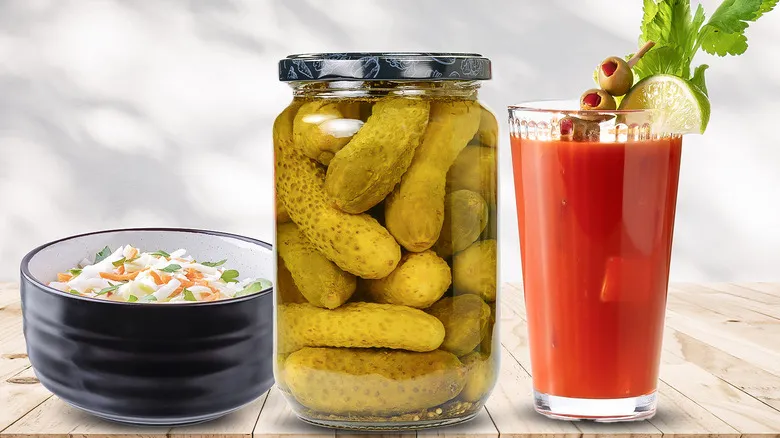Use it as a marinade
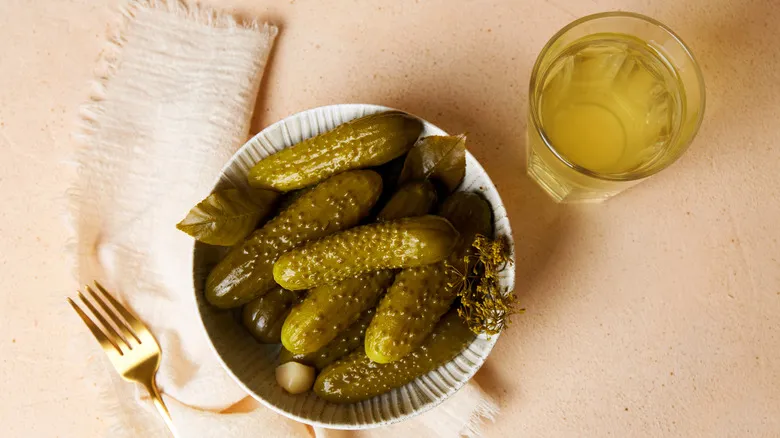
The salty essence of pickle juice infuses a rich flavor into meat when utilized as a marinade for pork or beef. This is an excellent application due to the pre-mixed combination of spices and herbs, along with the zesty vinegar. Pickle juice is rich in vinegar, a diluted acetic acid mixed with water. When marinating meat, the acid in the mixture aids in breaking down tough, fibrous cuts, resulting in incredibly tender bites. Additionally, the liquid is high in salt, which further softens these tougher cuts.
Various brands of store-bought pickles feature their own unique spice blends, but dill and garlic are often common ingredients in many recipes. When opting to use this leftover liquid as a marinade, ensure that the spices align with your desired flavor profile. While they may not be overwhelming, their presence will be discernible in the taste of the meat due to the marinade. The longer the meat is allowed to soak in the marinade, the more tender it will become, and the more pronounced those added flavors will be in the final dish. You can also enhance the brine with additional spices to further experiment, using the pickle juice as a flavorful foundation to craft your own signature marinade blend.
Add it to a bloody mary
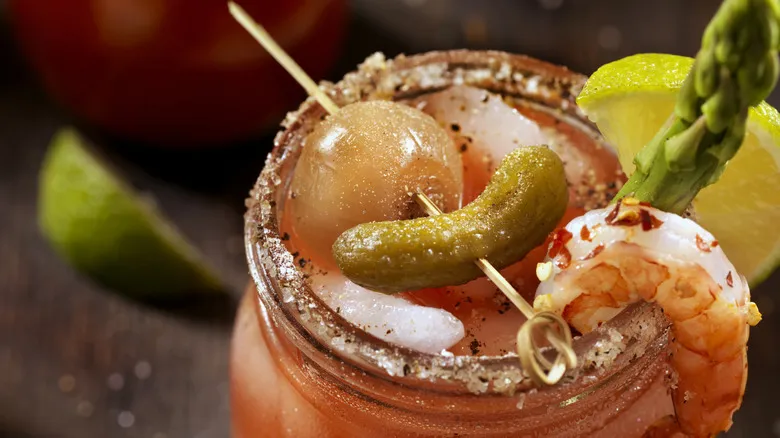
This salty liquid isn't just for culinary use; it can also elevate your cocktails. Incorporating pickle juice can transform your bloody mary into a unique experience by infusing it with umami richness. "It brings a savory depth that truly changes the drink," explains Marye Audet. In the classic recipe for this cocktail, lemon juice provides acidity and brightness to the vodka, tomato juice, and Tabasco. Additional flavor is introduced through a sprinkle of ingredients like celery salt and Worcestershire sauce, though the variations on this mix are nearly limitless. A splash of pickle juice adds that extra zing that bloody mary enthusiasts crave.
It pairs wonderfully with other ingredients for a burst of flavor. Celery, pickles, and olives are commonly used as garnishes for bloody marys, but shrimp, bacon, and jalapeños can elevate your drink into a flavorful meal. If you want to emphasize the briny aspect, don’t limit yourself to just a splash of pickle juice or a pickle garnish. You can serve the entire cocktail as a bloody mary shot in a hollowed-out pickle for a fun twist.
Mix up an extra dirty martini

Alongside classic Bloody Marys, Marye Audet suggests incorporating a dash of pickle juice to create an extra dirty martini. While traditional martinis are garnished with olives, dirty martinis take it a step further by mixing olive brine directly into the drink. Therefore, pickle juice serves as an excellent alternative for those seeking a unique twist while still adding a savory kick to the cocktail.
Similar to olive brine, pickle juice is quite salty, which helps to balance the alcohol's potency. Most pickle juice tends to have a stronger dill flavor compared to its olive-based equivalent, so you can anticipate a slightly more herbal taste if you choose this option. It will still provide your drink with the signature cloudy appearance of a dirty martini, along with a robust salty and savory flavor. Depending on the amount you use, it may even impart a greenish tint to your martini.
To craft a pickle martini, simply mix the pickle juice into your vodka or gin according to your taste preferences. It may take a few tries to find the right balance that suits you. If you already enjoy an extra dirty martini, feel free to start with a larger amount of pickle juice. If you're unsure, begin with just a splash to see how it suits your palate.
Have a pickleback shot

Chase whiskey with pickle juice for a distinctive shot experience. This combination softens the harshness of the alcohol while introducing a wealth of complementary flavors. The brine brings in salt and vinegar, while whiskey offers warm, earthy notes. Together, they create a rich blend that mitigates the burn often associated with strong spirits like whiskey. You can also pair pickle juice as a chaser for tequila or vodka.
This pairing is effective because it stimulates different taste receptors on the palate. Spirits like whiskey, tequila, and vodka tend to have a bitter profile, which activates certain receptors when they touch the tongue. In contrast, pickle juice engages the salty receptors. Salt can enhance sweetness and diminish bitterness, resulting in a smoother overall experience. Some whiskies may also present subtle flavors, such as a smoky peat or a delicate floral note. Regardless, the brine from pickle juice helps to lessen the alcohol's sharpness.
To prepare a pickleback shot, pour the whiskey and pickle juice into two separate glasses. Quickly consume the whiskey, then immediately follow it with the pickle juice.
Brush veggies and grill
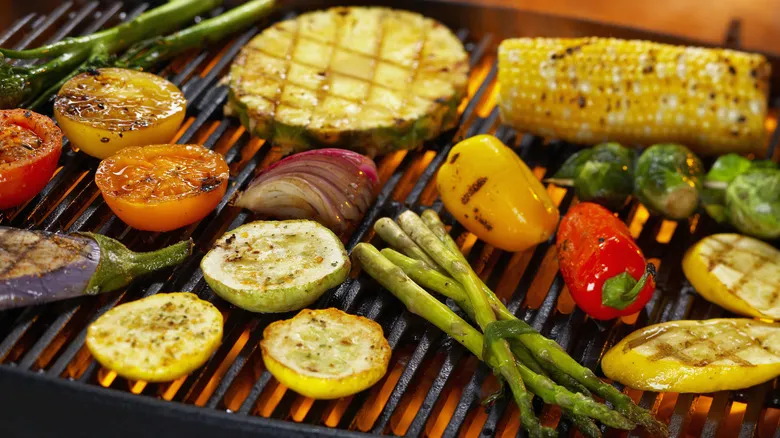
You don't have to restrict this tasty liquid to just beverages and marinades. You can enhance the salty, herby flavor in a variety of dishes, including cooked vegetables.
"If you're grilling, applying some brine to veggies before placing them on the grill enhances their bright, briny taste, which pairs wonderfully with smoky char," explains Marye Audet. She enjoys using pickle juice to season corn, bell peppers, and zucchini, noting that it makes them "really stand out." To give it a try, chop the vegetables and drizzle pickle juice over them just before grilling. For an even bolder flavor, reapply the juice a few times during cooking.
You might want to pour the liquid into a shallow bowl to make it easier to dip your brush. Alternatively, you can soak or dip the veggies in the bowl before grilling, though this method can be a bit messy. Regardless of the approach, when you baste the vegetables with the liquid, be sure to include the extra herbs and spices for maximum flavor.
Whip up salad dressing
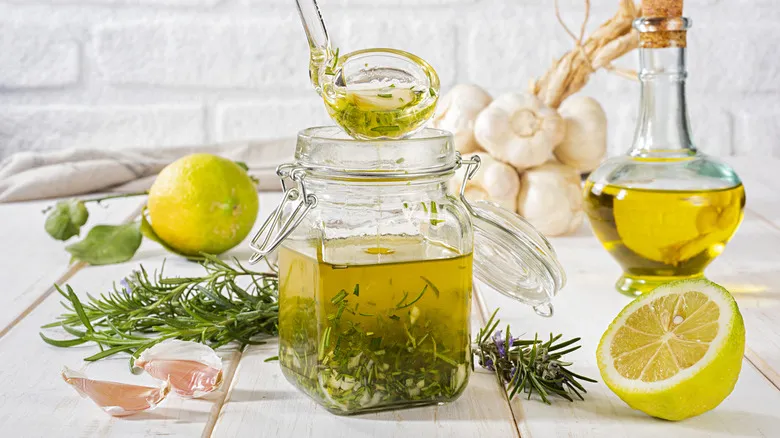
Pickle juice serves as an excellent alternative to vinegar in salad dressings. When combined with additional spices and herbs, it offers a burst of flavor that can make preparing a delicious salad even quicker. Creating a homemade vinaigrette with the seasonings already present in the leftover juice is the simplest option; all you need to do is mix in oil, vinegar, and salt. You can keep the dressing straightforward or elevate it with extra spices and seasonings for a more intricate taste. Both vinegar and pickle juice aid in emulsifying and blending the ingredients effectively.
The brine also adds a rich, savory flavor to creamy dressings. Olivia Roszkowski suggests using pickle brine to "make honey Dijon mustard dressing, ranch dip, flavored mayo, or a zesty remoulade." These can be drizzled over salads, used as a sandwich dressing, or served as a dip for bread. Be mindful of the spices in the brine and adjust your own seasonings accordingly, considering the flavors already in the pickle juice. If your brine is particularly salty, you may need to reduce the amount of added salt. Taste frequently while preparing your dressing to ensure the flavors are perfectly balanced.
Brine poultry

The salt present in pickle juice transforms this liquid into an outstanding brine for chicken or turkey. By soaking the poultry in this mixture overnight, you can ensure it turns out exceptionally juicy and tender when cooked the following day. Brining works by breaking down the tough muscle fibers in the chicken while infusing it with flavor. A basic saltwater brine is a well-known method for achieving a tender and delicious bird, but using pickle juice takes it a step further by adding extra spices for enhanced taste.
Marye Audet shares, "One of my favorite applications is in marinades, particularly for chicken. The brine not only tenderizes the meat but also imparts a wonderful, tangy flavor that feels like a secret ingredient. If you're preparing homemade fried chicken, soaking the chicken in pickle brine beforehand gives it that 'something special' that leaves everyone wanting the recipe." To avoid an overly salty result, you might consider adding a splash of pickle juice to a buttermilk fried chicken marinade for a more subtle flavor.
Mix a batch of coleslaw
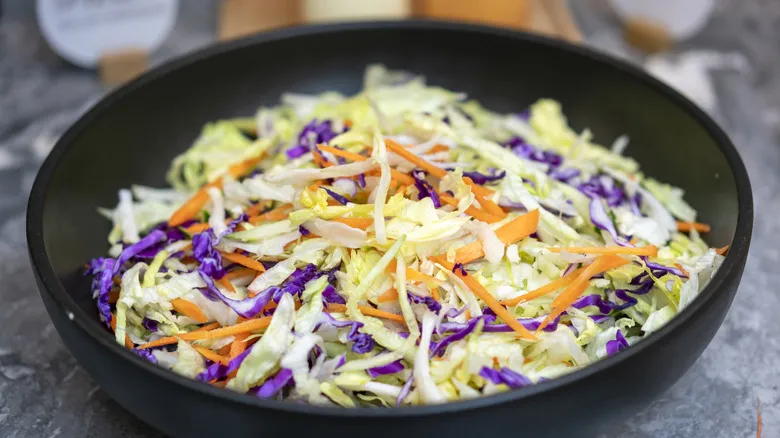
Once you start using pickle juice in your coleslaw, you'll never want to return to plain vinegar. "A splash adds a sharper, more complex flavor than regular vinegar, thanks to the garlic, dill, and various spices found in most pickles," explains Marye Audet. This technique works wonderfully with traditional cabbage slaw and can also enhance the sweetness of carrots. Additionally, incorporating pickles themselves can elevate store-bought coleslaw, so it’s only natural that adding some juice would further boost the flavor.
If you prefer a sweeter slaw, try using chopped sweet pickles or their juice instead of the dill variety. This can introduce a new dimension to the dish, though you might need to add a pinch of extra salt to achieve balance. Be sure to taste as you go to find the best combinations of vegetables and juice. Start with a small amount to avoid turning your slaw into a watery mess; just a little will enhance the flavor, while too much can compromise the delightful crunch of a great slaw.
Make potato or pasta salad

Potatoes and pickle brine create a delightful pairing, as the brine infuses a zesty flavor into the starchy potatoes. This combination can be utilized in both cold dishes like potato salad and warm sides such as mashed potatoes. "Pickle brine is one of those ingredients that adds character to meals, and it's exciting to experiment with," shares Marye Audet. Feel free to explore various spice and seasoning blends, using potatoes as a versatile canvas for your culinary creations.
This briny liquid is also a key ingredient in traditional German potato salad, known as Berliner potato salad, which is believed to be the original recipe that inspired numerous regional variations worldwide. In potato salad, the brine serves as part of the dressing and is best mixed with mayo, mustard, and other components before being drizzled over the cooked potatoes for optimal flavor integration.
Olivia Roszkowski enjoys soaking raw potatoes in pickle brine prior to roasting or frying. For the best outcome, chop the potatoes first and allow them to marinate in the brine for a few hours to absorb all the flavors. This technique acts as a marinade, infusing the potatoes with rich taste that is further enhanced by roasting or frying in a hot skillet.
Mix with deviled eggs
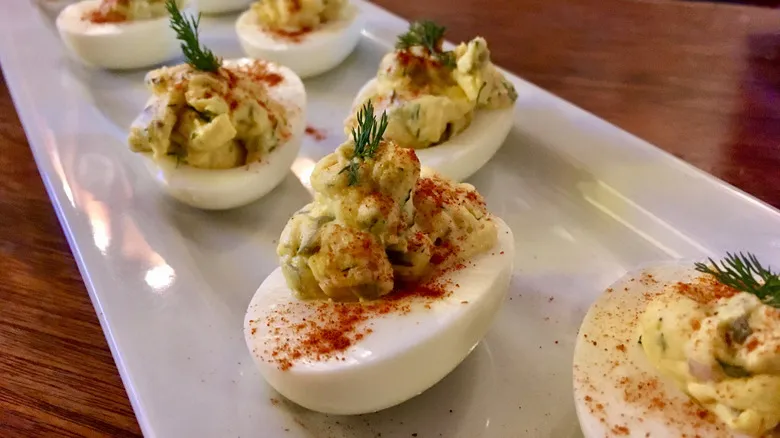
Pickle juice enhances the flavor of the creamy filling used for deviled eggs, providing a milder alternative to pickle relish, which is commonly included for its flavor and crunch. Marye Audet notes that incorporating this liquid into her deviled egg mixture adds "a little extra zing." The combination of salt and vinegar complements the rich, creamy texture of deviled eggs, which are typically made with generous amounts of mayonnaise and mustard. For an added touch, consider topping your eggs with chopped pickles or a sprig of dill to enhance both flavor and presentation.
A small amount of pickle juice can make a significant impact, particularly on texture. You want to avoid diluting the filling and ending up with a watery mess on your eggs. When incorporating pickle juice, be sure to reduce the quantity of your other wet ingredients accordingly. Begin with less mayonnaise and pickle juice than you think you'll need, mixing thoroughly. Gradually adjust until you achieve the desired taste and consistency for the perfect deviled eggs.
Drink the juice
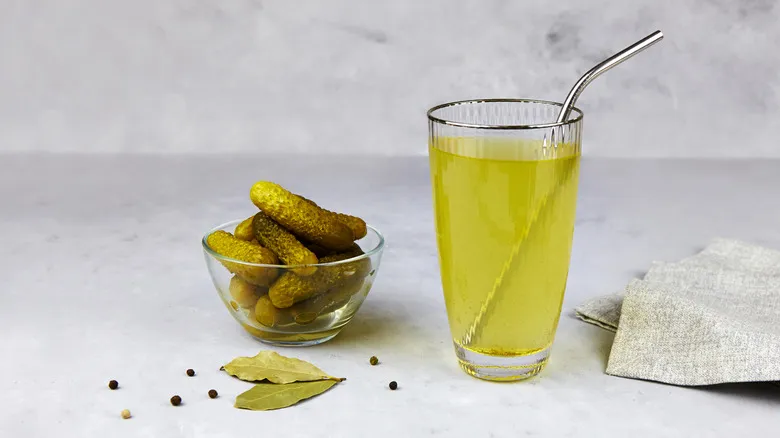
While you might not immediately think of sipping on pickle juice as a refreshing beverage, it can actually offer some health benefits. This tangy liquid is rich in salt and electrolytes, making it a good option for rehydration. Additionally, certain varieties contain beneficial probiotic bacteria. Pickle juice may also help reduce blood sugar spikes.
However, it's important to consume it in moderation to avoid excessive sodium intake. The nutritional content can differ among brands, and some may include additives and artificial coloring. If you decide to drink pickle juice, opt for one made with natural ingredients and free from artificial dyes.
A study published in the Journal of Athletic Training indicated that pickle juice has a higher sodium content than what is typically recommended for fluid replacement in sports drinks. It can serve as a suitable alternative if diluted with water and consumed in small quantities. Overindulging, however, can lead to excessive salt intake, which can be particularly risky for individuals with high blood pressure.
Reuse for more pickling
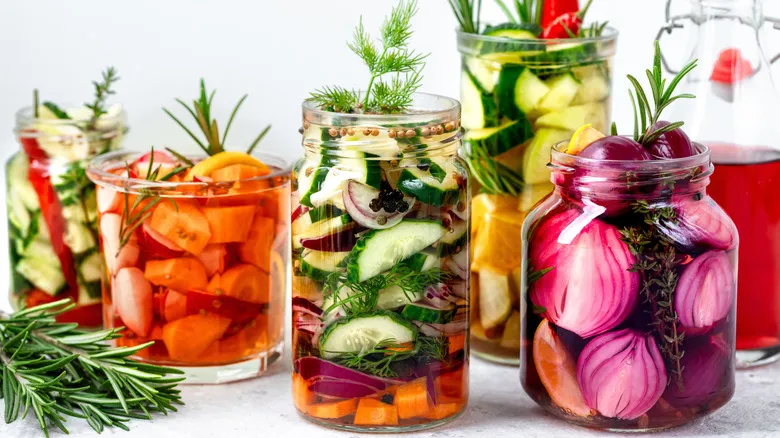
Don't rush to discard leftover pickle juice and make a trip to the store when you can repurpose it for another tasty batch. You can stick with traditional cucumbers or experiment with various flavor combinations, even pickling multiple types of vegetables in the same jar. "I recommend using vegetables that can withstand a bit of tang — carrots, radishes, green beans, and even cauliflower are excellent options," says Marye Audet. "Once, I even pickled hard-boiled eggs in leftover brine for a quick snack that turned out to be surprisingly addictive." If you prefer a crunchy pickle, opt for firmer vegetables, as softer ones may not hold up well in the vinegary liquid.
You might need to enhance the brine with fresh spices, herbs, or vinegar to achieve your desired strength. "Before using your brine for a second batch, it's wise to taste it," advises Olivia Roszkowski. "You can always add a pinch of sea salt, a splash of vinegar, and a few slices of garlic to ensure a flavorful and successful second pickle." She also suggests storing the second batch of pickles in the fridge to prevent the growth of harmful bacteria, which is more likely to occur if left at room temperature.
Recommended
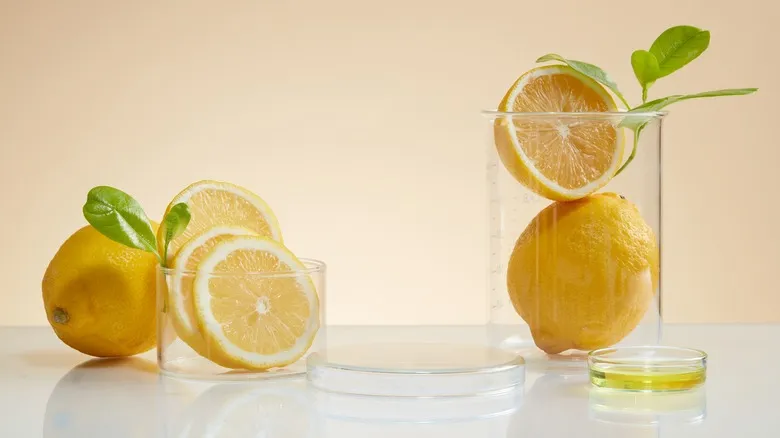
How To Make Lemon Extract With Just 2 Ingredients

The Hot Dog Hack You Need To Try The Next Time You're Feeding A Crowd
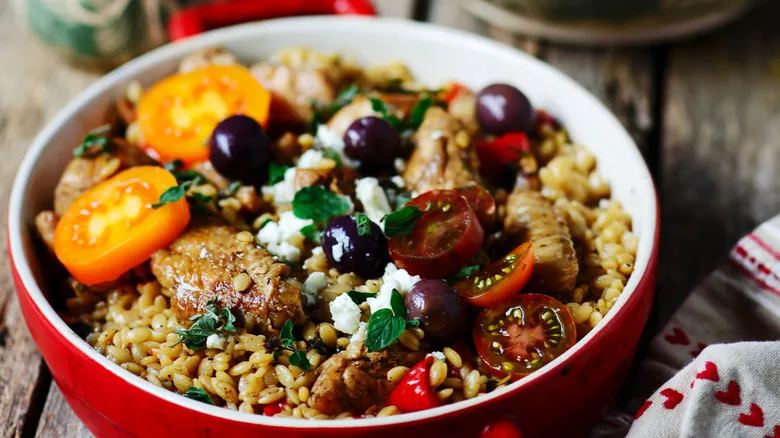
No, Orzo Isn't Rice. So What Is It Exactly?
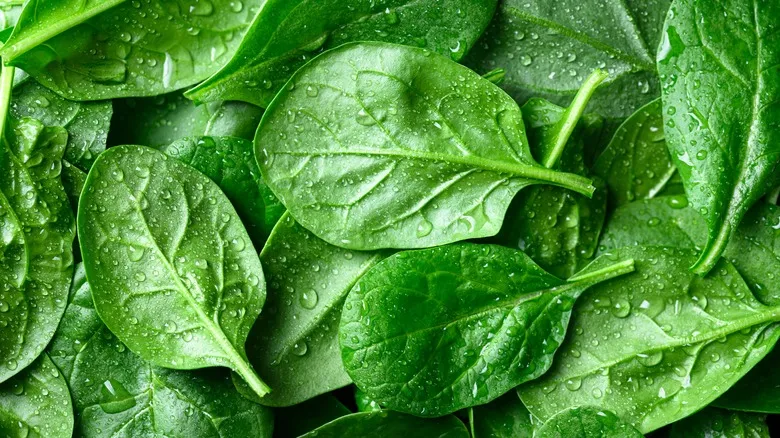
What To Look For When Buying Good-Quality Spinach
Next up

